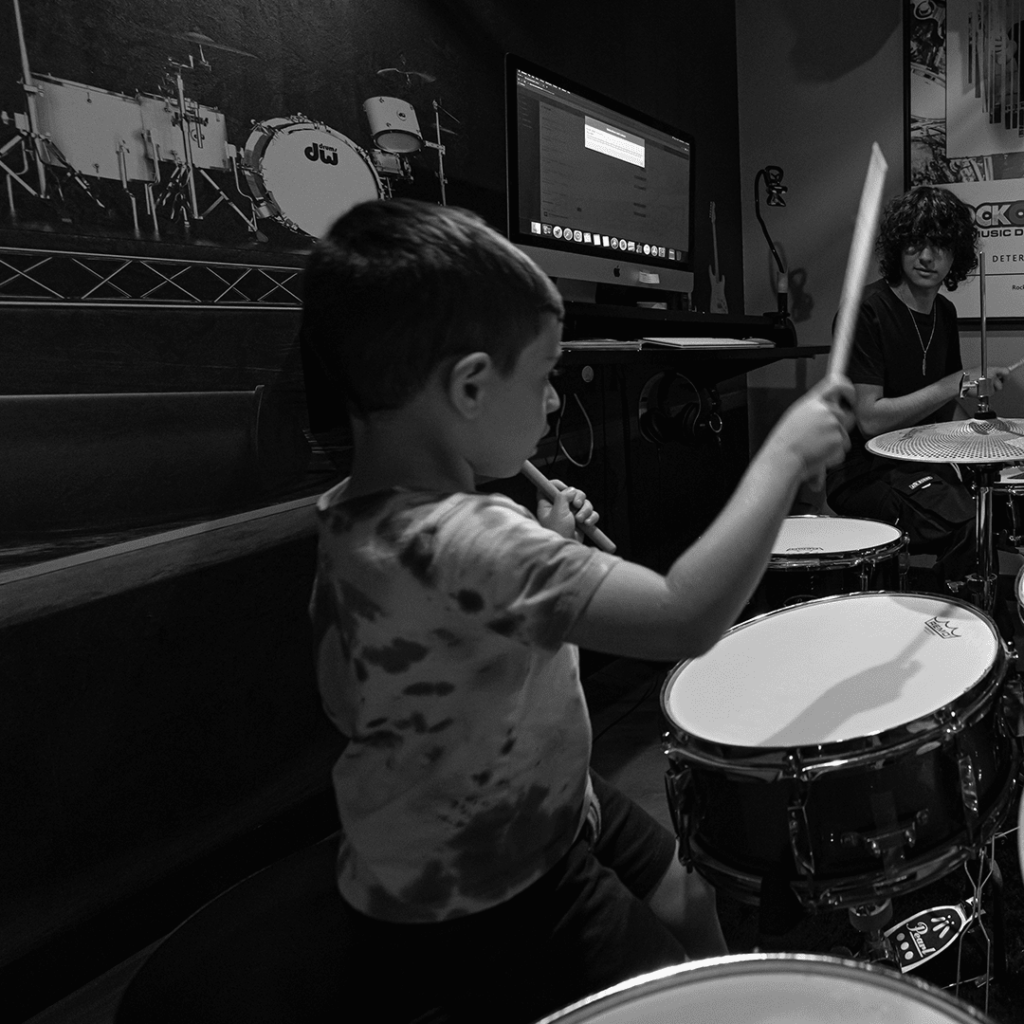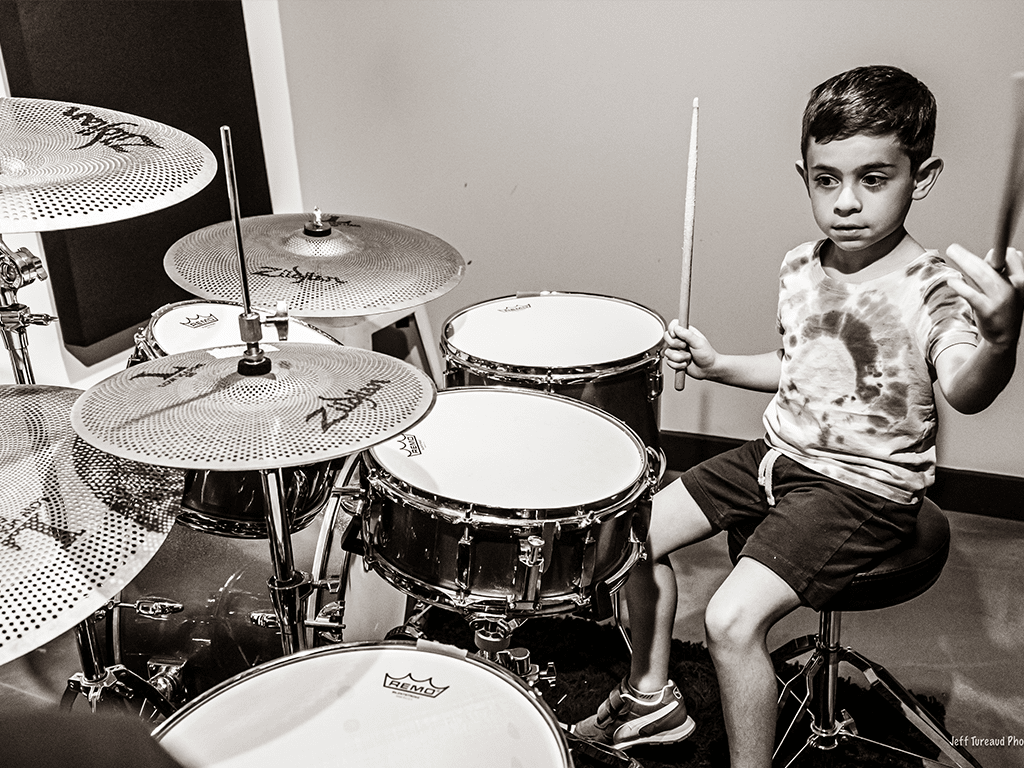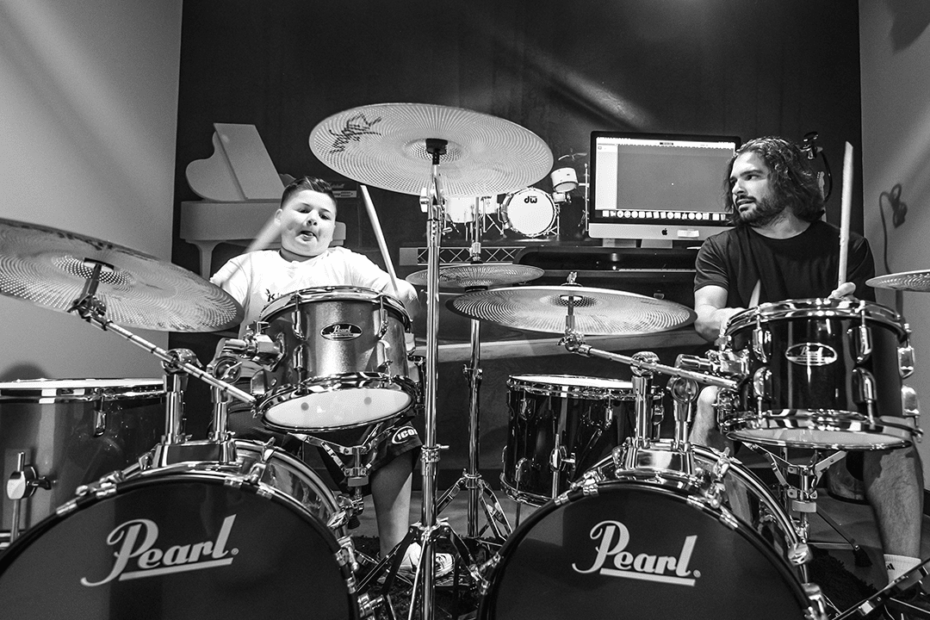A double bass pedal has changed the game for heavy music, and it shouldn’t come as a surprise that nearly every drummer wants to know how their idols are able to use it so masterfully.
In truth, the double kick technique has a significantly steeper learning curve compared to the single kick, but with the right guidance and a lot of practice, anyone can learn it. That’s where The Music Box drum coaches come into play.
Whether you’re a parent seeking the best drum education in Tampa, FL for your child, a beginner looking to improve your double-kick drum chops, a hobbyist, or an experienced drummer, The Music Box is here to help you reach your goals. In this article, we’ll highlight some of the main types of lessons our drum-coaching sessions entail, so let’s start from the top.
Getting Started with the Double Kick Pedal
Just like a single bass pedal, a double kick pedal must be installed on your drum set before you can play it. The setup process is almost the same as with a single pedal with the addition of the drive shaft (the metal bar connecting the pedals).
You can set the main pedal (the one with the beaters, springs, and hoop clamps) the same way you’d set a single pedal, but to ensure that you can comfortably press the second one, they need to be slightly angled. Sit in your drum throne in a natural position and memorize where your feet would normally be. This is the ideal distance between the pedals.
Always leave a bit of space for adjustments on the fly. Until you get the hang of how playing two pedals (and two beaters) feels, you’ll probably move them quite a bit. If you want to see the setup of some of our brightest students, come and check out our Facebook page.

Starting with Simple Rhythms
Many beginners initially buy a double bass drum pedal because a single pedal can’t give them the rapid-fire kick speed they need to play heavy rock and metal tunes. There are quite a few hurdles you’ll need to hop before you should start working on improving your speed; as we mentioned, the double kick drum is considerably different to play from standard drums.
For starters, you should revisit some of the most elementary rhythms and patterns you’ve learned when you started practicing drums. In case you’re a fresh learner, you can find dozens of beats and drum-along videos on our Instagram page, so make sure to check it out.
A basic “kick-snare-tom” pattern will do to get you warmed up. As soon as you’ve finished a beat, use the second kick drum to start the sequence. Gradually, mix things up by adding other cymbals and up to one additional kick in between the toms. Once again, it’s important to get a feel for using your non-dominant leg when playing drum patterns.
Another simple sequence that focuses more on the bass drum that you could try is “kick-snare-kick-kick-snare”. The “pair of kicks” should be played in 16s while the other notes should be 8s; it’s a basic heavy metal pattern that you’ll probably be using quite a bit when you start playing with a band.
Working on Kicking Accuracy
Now that you’ve tried playing a few sequences with a double bass drum pedal, you might’ve noticed that not all of your kicks are consistent. Most beginners, and even some more experienced drummers who’ve solely played a single bass drum struggle to sync the kicking power of their feet.
Your non-dominant leg might feel a bit stiff since your dominant leg did all the work so far, and that’s natural. It’s important to work on nailing the beats and patterns consistently; take as much time as you need, and start off slowly.
You will know that your kicks have synced (and that your double bass drumming is becoming more accurate) when it becomes hard to tell a difference between which beater hit the bass (or which leg you’ve used to do it).
Improving your accuracy and making consistent progress requires you to be patient. If you’ve hit a wall and want to learn more about how to tackle this challenge, you can visit our TikTok page and check out clips from some of our students for more inspiration.

Working on Speed
Double bass drumming speed is learnable and teachable. There are no shortcuts, but there are ways to correct your technique and help you optimize your playing economy, but you could build up your drumming speed through practice as well (although it will probably take more time).
If you’re looking to improve your speed, let us invite you to The Music Box – Tampa, Florida’s premier drumming school. Our coaches have worked with numerous aspiring drummers, children, teens, and adults, and if you feel like you’re not making progress as much as you’d want to, you’re more than welcome to our class.
As for your training at home, increasing your drumming speed boils down to practice, endurance, and concentration. If you’re diligently working on improving your kicking accuracy and playing drums (even casually) for at least a couple of hours a day, you’ll start seeing results.
Playing fast will drain you more quickly. This means that you’ll greatly benefit from any form of physical exercise, whether it be hitting the gym, jogging, or even power walking.
Concentration is the key to all aspects of drumming. When your focus wanes, your playing will become sloppier; you’ll fall out of tempo, and you’ll have a harder time allocating even amounts of strength to each kick. As soon as you notice that you’re struggling, take a breather, hydrate, and return to your drum set in a couple of minutes.
Join The Music Box: Tampa, Florida’s Best Drumming School
Drums are among the most delicate musical instruments, but with an expert drum coach, learning how to play a double bass drum is a breeze. If you’re ready to join The Music Box, just tap on this link, and our team will help you enroll.



